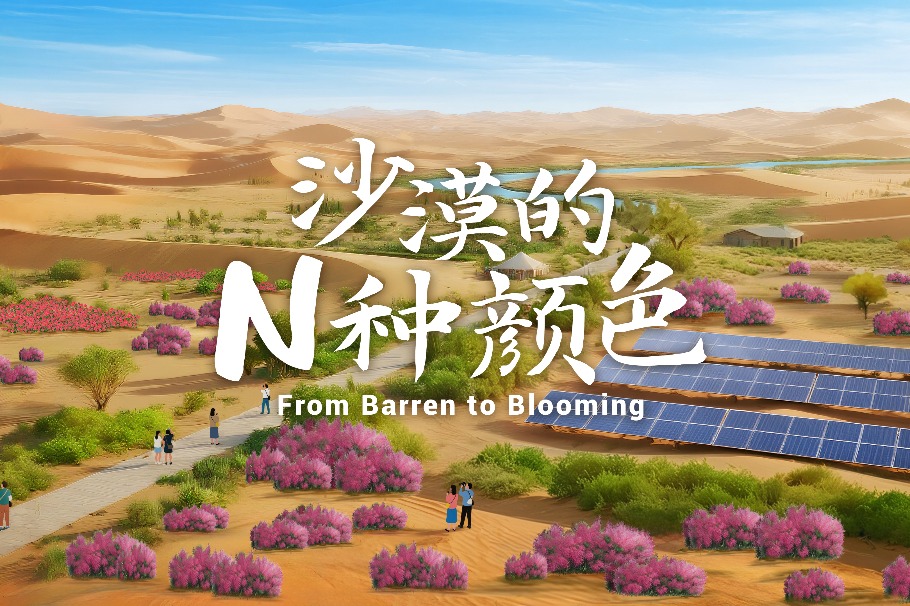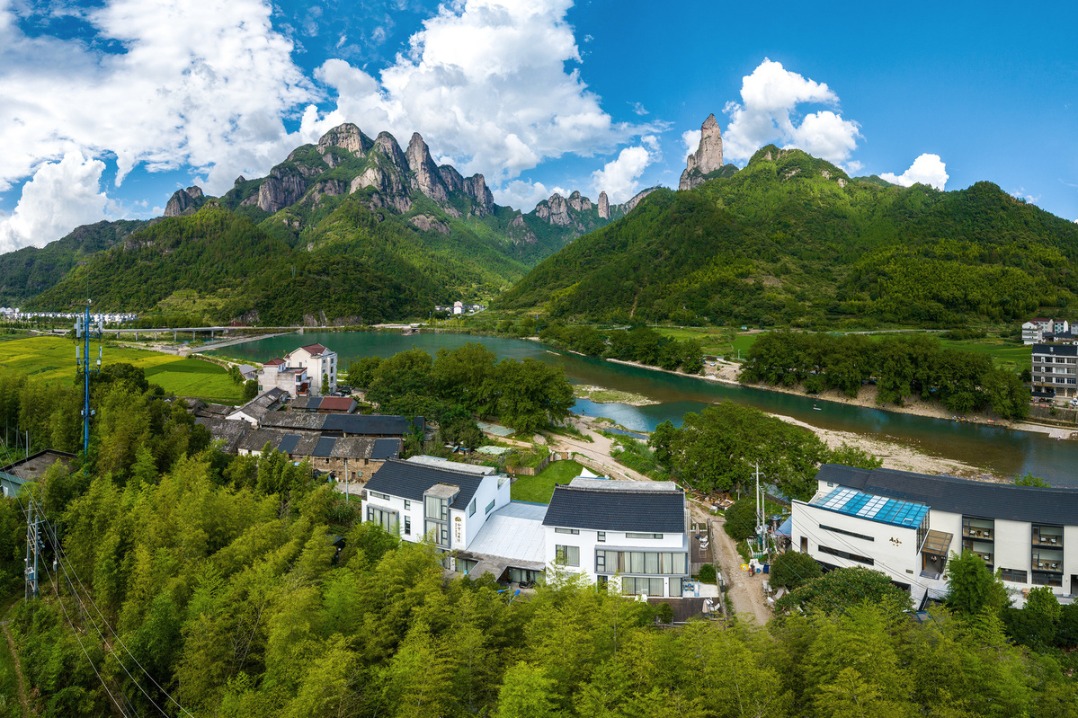A year's rainfall in a single day


Since late July, northern China has been battered by rainstorms and record high downpours, with places like Miyun district in Beijing and some counties in Hebei province receiving record levels of rainfall. In Miyun, heavy downpours flooded the mountainous areas and lowlands alike, causing the tragic loss of lives and leaving many missing — the worst such disaster Beijing has faced in nearly a decade because of the area receiving almost a year's rainfall in a single day.
Several factors caused this disaster. The Western Pacific subtropical high, a large-scale anti-cyclonic circulation located over the subtropical Pacific throughout the year which reaches its peak in boreal summer (Northern Hemisphere summer) and heavily influences East Asian summer, shifted unusually northward, gaining in strength, nudging China's primary rain belt further north and prolonging its stay. Meanwhile, distant typhoons acted like offshore "pressure pumps" funneling warm, moist air from the Western Pacific into northern China. This continuous infusion of moist air saturated the rain belt, causing extreme precipitation.
The topography amplified the effect. Northern China is surrounded by the Taihang Mountains in the west and the Yanshan Mountains in the north. The warm, moist air flowing inland, forced upward by these mountains, first cools down and then condenses to cause heavy rainfall. That's why the mountainous areas as well as the foothills — Miyun district in Beijing and Yixian county in Hebei — had to bear the brunt of the deluge.
But not just the mountains are at play here. Situated along the mid-latitude, northern China is exposed to cold fronts sweeping down from the higher latitudes. When they collide with tropical moist air, huge walls of cloud form, triggering torrential downpours.
Rainfall involves the transformation of staggering amounts of energy into water in vapor form, which changes to liquid. During China's summer-rainy season, these rain belts span vast areas, generating super-strong winds, lightning, hail, and even tornadoes. Nature's power, in short, is spectacular and indiscriminate.
Northern China's climate adds another twist. The region experiences sharply contrasting winter and summer winds, which create distinctly dry and wet seasons. Summer heat coincides with peak rainfall, further nourishing fertile farmlands. Yet this "rain-heat synchronicity" is a double-edged sword: a large percentage of the annual precipitation develops within a few months, often in concentrated bursts, which cause floods and landslides.
Climate change has made matters worse. Rising temperatures increase atmospheric moisture, intensifying storms and a warmer atmosphere holds more water vapor, so when storms form, they can dump more rain in a shorter time. According to the World Meteorological Organization, every degree of global warming is projected to cause a 7 percent increase in extreme daily rainfall. And the UN's Intergovernmental Panel on Climate Change says heavy precipitation events are increasing in intensity and frequency globally. In China, this has manifested as more destructive flooding, underscoring the urgent need for forward-looking policies.
In the past, northern China's wetlands, ponds and rivers acted as natural buffers, absorbing rainwater and gradually releasing it, diminishing the contrast between the wet and dry seasons. But development and modernization disturbed the natural phenomenon. Flood management, therefore, should not be only about "draining" water; it should be also about integrating year-round water resource planning.
The frontline has shifted from major rivers to small streams, mountain gullies and local watersheds. Traditional solutions — dredging, widening and deepening of channels — often backfire, unleashing the full force of floods downstream and overwhelming flat, low-lying areas. Decentralized, nature-based structures — small dams, terraces, stepwise wetlands — are needed to dissipate energy, and "pocket reservoirs" are required for absorbing peak water flows during storms. Multifunctional flood storage areas can double as recreational spaces when they are dry, providing safety while enhancing local tourism and green infrastructure.
Truly extreme events — "a year's rainfall in a single day" — are still rare. Building "millennial" infrastructure is costly, disruptive, and could still be insufficient to deal with worsening climate change. A more pragmatic approach would be to embrace the limits of engineering and the extremes of disasters. Certain areas can be designated as temporary flood zones, parks or water retention spaces, turning potential catastrophes into ecological and recreational opportunities. Green spaces and wetlands will thus become essential buffers safeguarding lives and livelihoods.
Extreme rainfall affords no trial and error. We need meticulous planning and investment to reduce future losses. Governments, communities and individuals must be aware of the looming risks, and build adaptive infrastructure and devise emergency plans. Only then can we declare "we are ready" when storm clouds gather.
Downpours in northern China remind us that nature can be both generous and ruthless. We cannot command the clouds, but we can prepare intelligently to deal with heavy downpours. By respecting ecological limits, integrating urban planning with water management, and embracing flexible, multi-functional solutions, we can turn extreme rainfall from a threat to an opportunity, thus protecting lives, supporting sustainable development, and ensuring that when an entire year's rainfall falls in a single day, we are not caught off guard.
The author is deputy director of the Center for Monsoon System Research Institute of Atmospheric Physics, Chinese Academy of Sciences.
The views don't necessarily represent those of China Daily.
If you have a specific expertise, or would like to share your thought about our stories, then send us your writings at opinion@chinadaily.com.cn, and comment@chinadaily.com.cn.


































